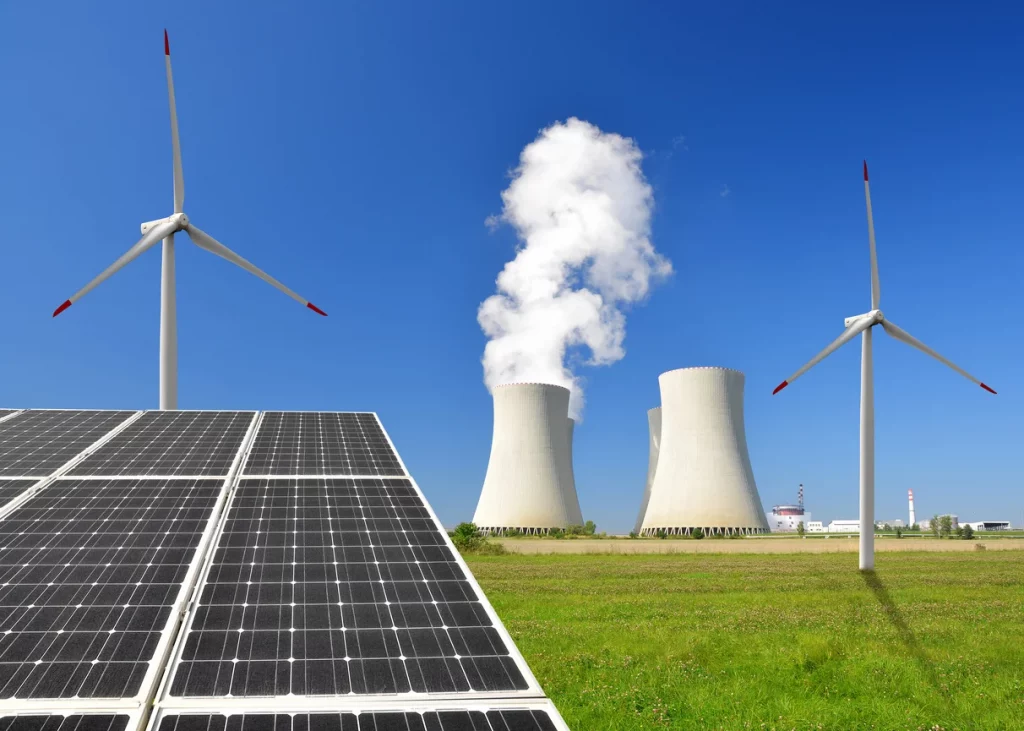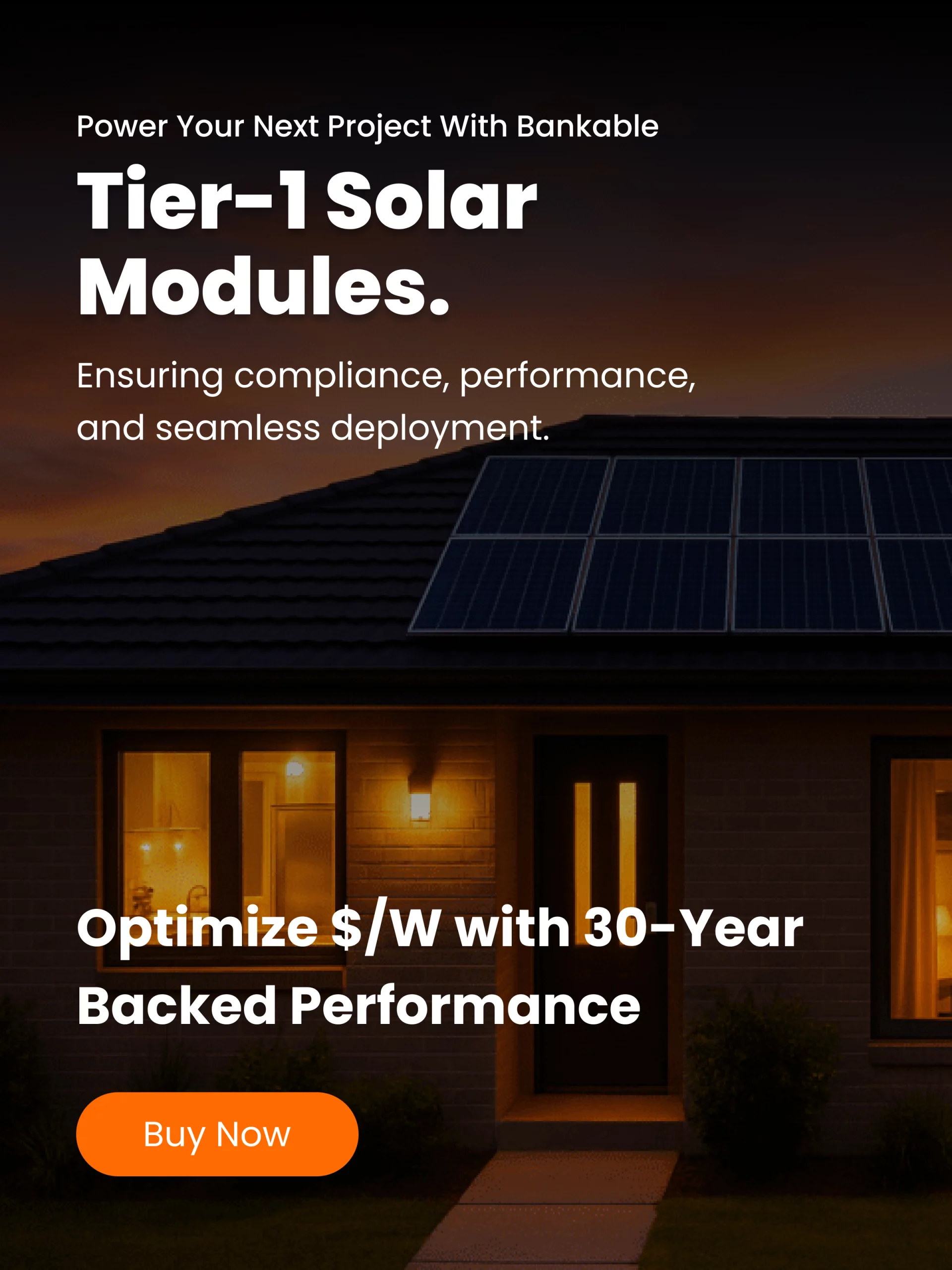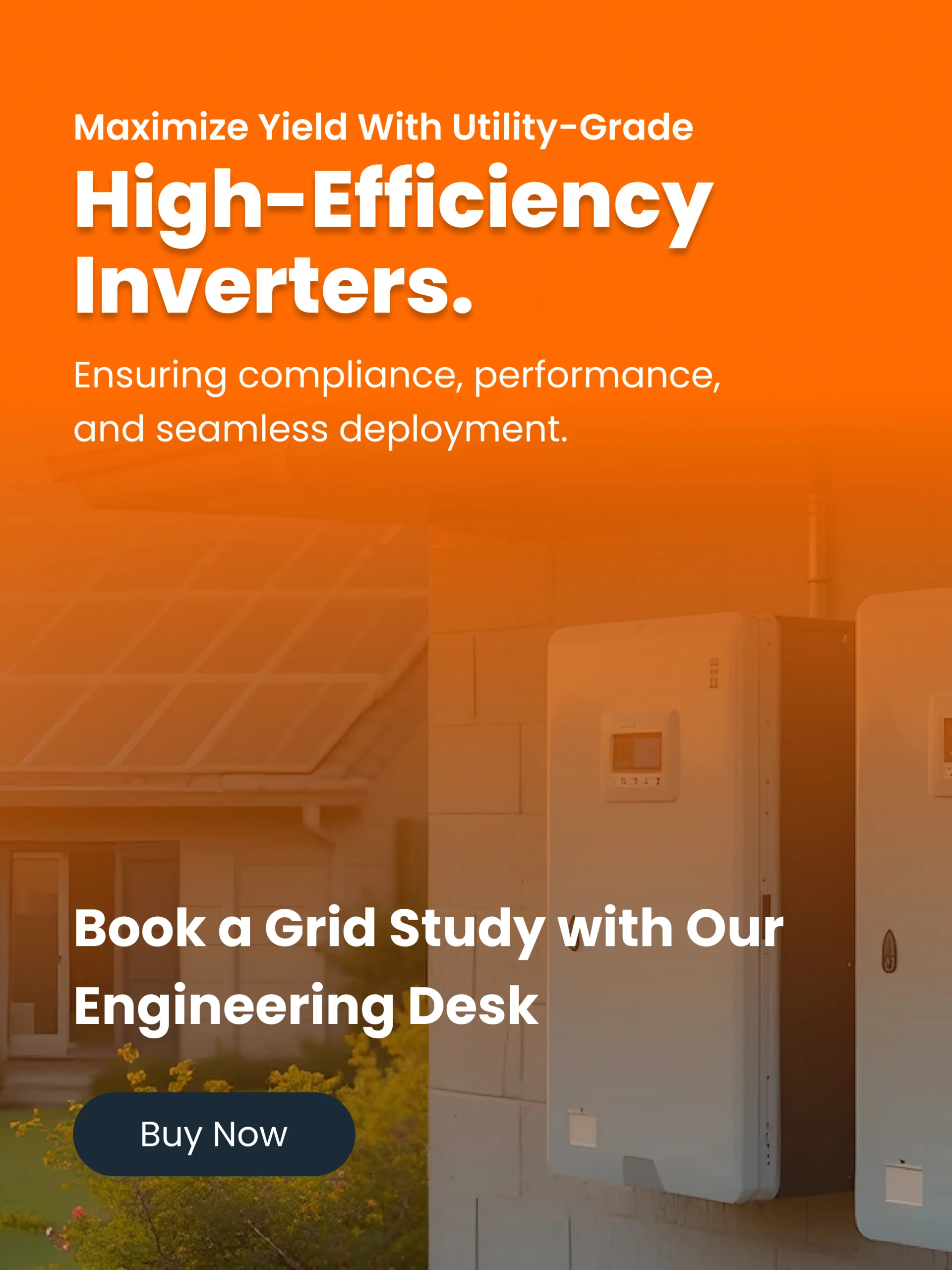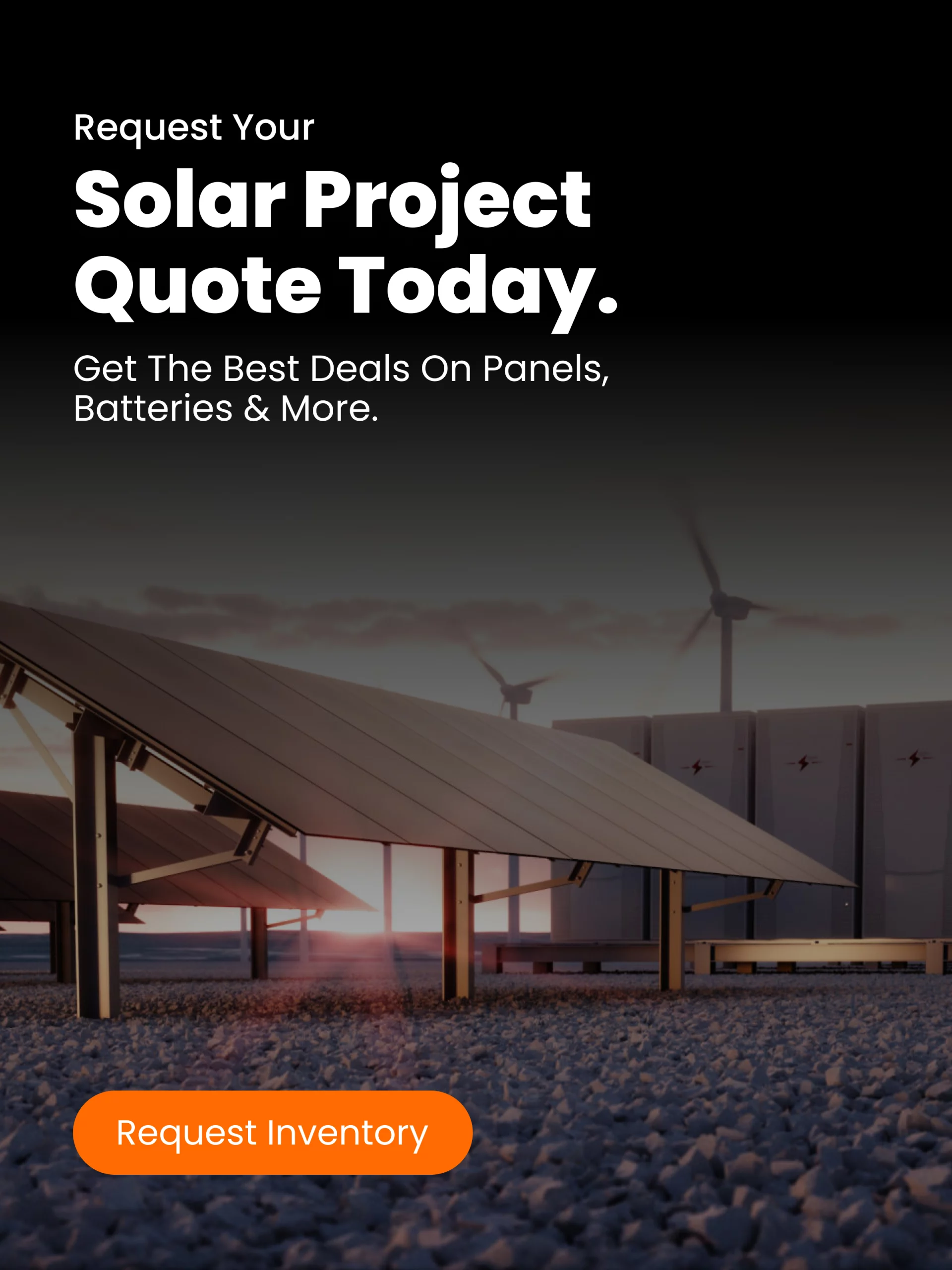The question of whether solar energy or nuclear power is the better choice for future energy needs is more relevant now than ever. Both energy sources offer low carbon emissions and potential to reduce dependence on fossil fuels. Each has strengths and drawbacks. In 2025, with rising energy demand, urgent climate goals, and rapidly changing technology, it helps to compare them across several criteria: cost, reliability, environmental impact, safety, scalability, and more.
What Are Solar Energy and Nuclear Energy
Before comparing them, let us define each.
Solar Energy
Solar energy comes from converting sunlight into electricity using photovoltaic (PV) panels or using solar thermal technologies. It is renewable and abundant in many parts of the world. Solar panels generate direct current (DC) electricity. This electricity is usually converted via inverter to alternating current (AC) for most uses in homes, businesses, or feeding into the grid.
Nuclear Energy
Nuclear energy comes from splitting the nuclei of atoms in a process called nuclear fission. That produces heat, which is used to produce steam. The steam drives turbines, which generate electricity. Nuclear reactors provide large amounts of power continuously, since they do not rely on sunlight. Nuclear energy is low in carbon emissions once plants are running. It is considered a non-renewable resource because it depends on uranium or other fuel sources that are finite.
Key Factors for Comparing Solar and Nuclear
We can compare solar and nuclear energy across several key dimensions. The following table helps illustrate main differences as of 2025.
| Factor | Solar Energy | Nuclear Energy |
|---|---|---|
| LCOE (Levelized Cost of Energy) typical values | ~$40 per MWh or lower for utility-scale solar in many regions with favorable sun and incentives (Close to Nature data) | Higher, sometimes ~$150+ per MWh in many existing nuclear plants, when upfront costs, financing, regulatory burdens are included (MaySun Solar) |
| Capacity factor (how much of the time a plant produces near full capacity) | 20-30% depending on location and weather, storage or grid support needed for night or cloudy days (MaySun Solar) | High, often over 90%, because reactors operate continuously until refueling or scheduled maintenance (MaySun Solar) |
| Construction / deployment time | Shorter, typically 1-3 years for large solar farm, less for rooftop or smaller systems | Long, often 5-10 years or more due to regulatory review, safety licensing, construction complexity |
| Upfront capital and financing cost | Lower upfront plant cost for equivalent capacity, especially when subsidies or incentives are available | Very high initial capital requirement, with financial risk and often government or public guarantees needed |
| Environmental emissions & waste | Very low during operation, some emissions during manufacturing and panel disposal | Low emissions during operation, but generation of radioactive waste and complexity of safe disposal matter |
| Safety / risk | Low risk, minimal health risks, no risk of meltdown, less risk to local communities | Risk of catastrophic failure (although rare), concerns about nuclear accidents, long-term radioactive waste, security risks |
| Lifespan of facility | Solar panels commonly guaranteed for 25-30 years of useful life with modest degradation | Nuclear plants designed for 40-60+ years or more, sometimes extended through upgrades |
Advantages of Solar Energy
Here are several reasons solar looks appealing in 2025 and where it often outperforms nuclear in many contexts:
Faster Deployment
Solar farms, rooftop arrays, or distributed solar installations can start producing power relatively quickly. Grid-scale solar plants often take less time to permit, build, and connect to the grid. MaySun Solar notes the setup time for solar plants is far shorter than nuclear.
Lower Upfront Costs
Solar energy systems require lower capital investment for equivalent megawatts of capacity in many regions. Solar avoids costs of nuclear fuel infrastructure, waste storage, heavy regulatory compliance, safety containment structures, and complex cooling systems.
Scalability and Flexibility
Solar installations can scale from small rooftop homes to large utility farms. They are modular. If demand increases or budget allows expansion, capacity can be added in stages. Israel, India, and many U.S. states show rapid growth of solar capacity due to this flexibility.
Environmental and Safety Benefits
Solar systems produce no radioactive waste. They avoid many risks associated with nuclear power, including meltdown risks, long-term waste storage, security risks, and potential environmental contamination. Maintenance is simpler because solar panels have no complex moving parts.
Declining Costs
The cost per watt or per MWh for solar has dropped significantly over the past decade. Technological improvements, improved supply chains, scale effects, and competition help drive down costs. Many solar projects now become cost-competitive without heavy subsidies in places with good sunlight.
Advantages of Nuclear Energy
While solar has many strengths, nuclear energy remains compelling in some scenarios. Here are its main advantages:
High Capacity Factor and Baseload Generation
Nuclear plants run continuously, providing power day and night, regardless of weather. That continuous power helps support grid stability and provides reliable supply in many jurisdictions.
Long Operational Lifespan
Nuclear reactors are built to operate for decades. Many have long lives if well maintained. Because of that lifespan, once the high upfront cost is paid, they can deliver steady output for decades.
Smaller Land Footprint for Equivalent Output
Because nuclear plants are densely powerful, they require far less land per MW generated than solar farms to produce similar amounts of electricity over long periods.
Low Emissions Once Operational
Nuclear produces minimal greenhouse gas emissions during operation. It is one of the lowest carbon sources of large-scale power once operating.
Challenges of Each Option
Neither solar nor nuclear is perfect. Each has its own set of challenges.
Solar Challenges
Intermittency: Solar only produces electricity when sunlight is available. Nights, cloudy days, and seasonal variation reduce output. Battery or other storage is needed to maintain supply when the sun is not shining.
Energy storage costs: Good batteries or other forms of storage add to system cost. Managing grid integration and storing surplus solar energy increases complexity and cost.
Land and resource requirements: Utility-scale solar farms require large areas of land. Manufacturing panels requires materials such as silicon, silver, copper, and sometimes rare earths. Panel waste and recycling matter for environmental impact.
Degradation over time: Solar modules degrade, losing efficiency over years. Warranties typically guarantee a certain output level after 25-30 years, but performance drops gradually.
Nuclear Challenges
Upfront cost and time: Building a nuclear plant involves major capital cost, regulatory approvals, licensing, safety and security measures. Projects often face delays and cost overruns.
Waste management: Radioactive waste from nuclear reactors must be stored safely for long periods. Finding and managing waste storage is expensive and often controversial.
Safety risks: Although severe accidents are rare, the consequences are long-term. Public perception and regulatory hurdles remain high.
Limited flexibility: Nuclear power plants are not easily scalable in small increments. They are large central facilities, not suited to rapid scaling down or up.
What Current Trends Show
Here are some verified developments in 2024-2025 that help us understand how solar and nuclear compare in practice:
In the U.S. in 2024, combined electricity generation from solar and wind farms surpassed nuclear generation for the first half of the year. (Reuters)
Globally, solar generation is expected to temporarily eclipse nuclear output during peak months of 2025, showing both how solar capacity is increasing and how it can sometimes outproduce nuclear in favorable conditions. (Reuters)
Which Choice Fits Best Depending on Goal
There is no one size fits all answer. The better choice depends on what is most important in your context.
| Your Priority | Likely Better Choice |
|---|---|
| Need reliable, consistent power 24/7 regardless of weather | Nuclear |
| Need to deploy quickly with lower upfront cost | Solar |
| Limited land or space available | Nuclear |
| Want low environmental risk and simpler maintenance | Solar |
| Aim for renewable, decentralised energy | Solar |
| Have strong regulatory support and budget for large infrastructure | Nuclear |
Final Thoughts
Solar energy and nuclear energy both have strong advantages and important trade-offs. Solar gives speed, lower cost, flexibility, environmental safety, and scalability. Nuclear gives high reliability, high power output, and continuous generation. For many countries or regions, combining both in a mixed energy portfolio may deliver the best results.
In 2025, solar is rising fast. It is already overtaking nuclear in generation in several regions under certain conditions. The declining costs, advancing storage solutions, and increasing urgency for clean energy make solar a very strong contender. Nuclear still has its place when stable baseload power is needed and when the investment and regulatory frameworks align.




